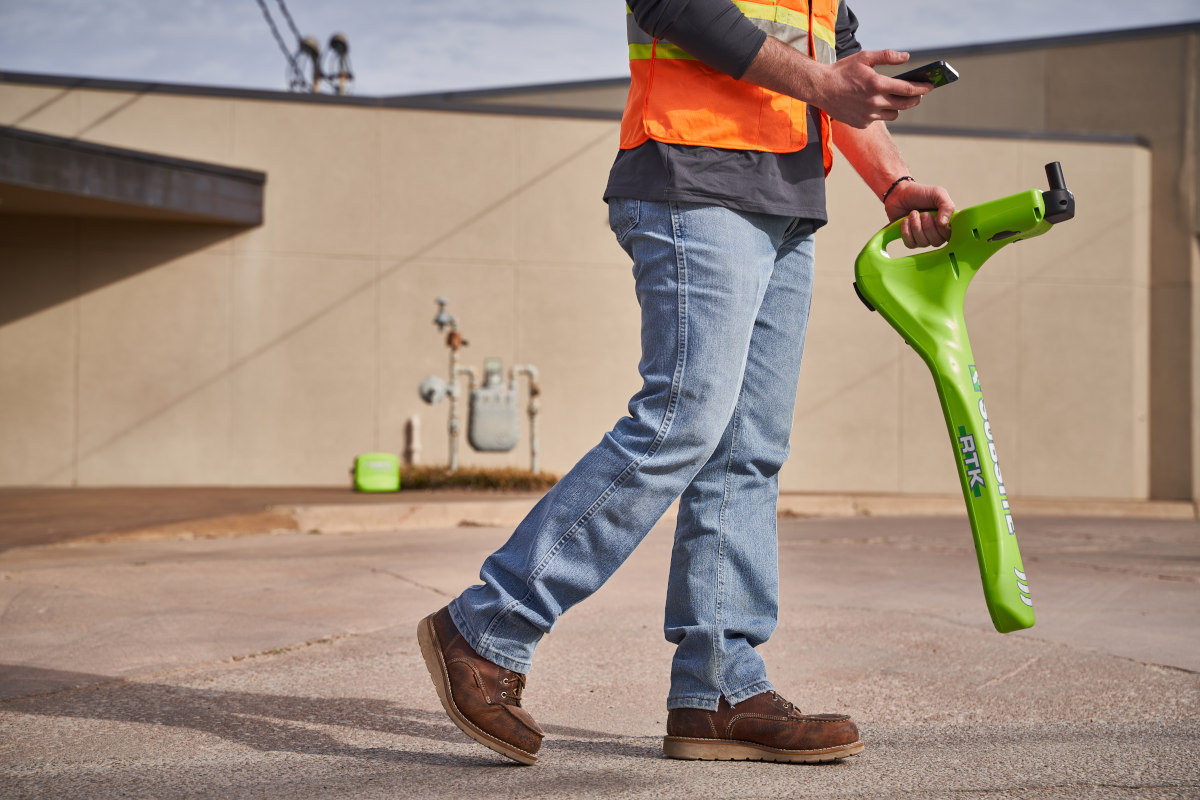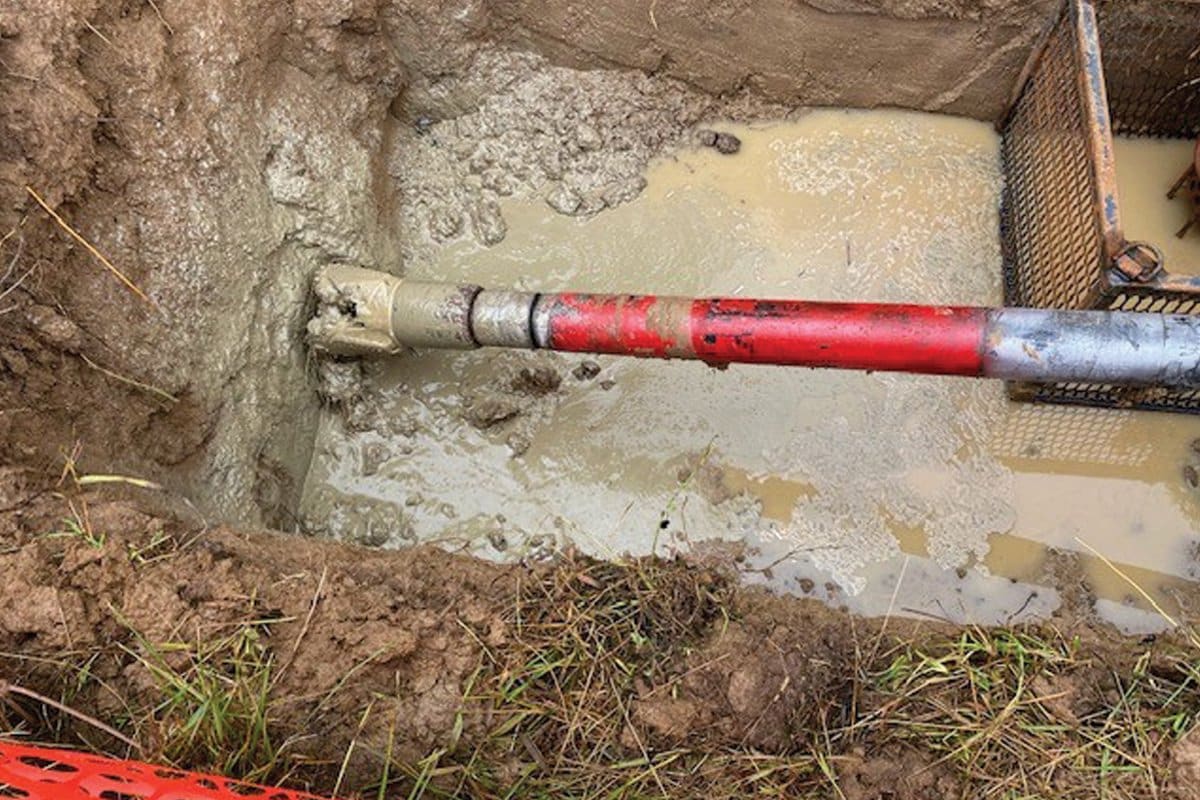
HDD Guidance Technology: Risk vs. Reward
Horizontal directional drilling projects carry a continuous amount of risk due to the nature of the work. Several risks involved with the HDD process are related to unforeseen, sometimes unavoidable, circumstances. Most innovation in the HDD industry has been made with the attempt to reduce the risks involved.
Arguably, many risks are taken with the opportunity to save or gain a marginal amount of money.
RELATED: Thinking Beyond the Drill on Environmentally Sensitive Bores
Extensive soil investigation can be examined thoroughly, and a well engineered bore path can be designed accordingly, however there are still risks for deviations from any designed bore path.
Just as a building is only as strong as its foundation, pilot hole operations for HDD crossings are the foundation of a successfully completed project.

Example: Shows MST vs. GST potential deviation calculated over 1,000m crossing. Potential magnetic deviation shown in illustration calculated at +/-2% using 40-m depth from the surface coil as an example. The greater the depth of the MST to the surface wire, the greater the potential magnetic deviation during measurements. The Max Gyro Deviation calculated is not only less over the entirety of the crossing in the example, but would not change with a greater depth from surface.
The specifications and tolerances that accompany most engineered projects have become more rigorous over the years to reduce such risks. So, how do we adhere to these specifications to ensure the quality and assurance of risk reduction is followed — Especially with the high levels of scrutiny surrounding the average pipeline project these days?
With several advancements made to HDD equipment and procedures over the last two decades, the trenchless industry has pushed the parameters of what was once not possible due to the risk involved. These technological advancements to equipment along with project engineering, have collectively reduced the risks of the average HDD project and forged the way to longer, larger and more complex projects we are undertaking every day.
HDD guidance technology has been no exception.
Risk management has become the fundamental basis to the improvement of HDD execution, so with all the advancements made in the last 20 years to reduce the risks of HDD project completion, why are so many HDD contractors still taking on unnecessary risks when selecting steering technology for navigation of HDD pilot holes? Why do we still see the use of magnetic steering tools on projects where magnetic disturbances can be expected when such risks are avoidable?

High voltage power lines complex. Gyro technology used due to obvious external interferences making the use of other steering tools not possible.
Gyro Steering Technology (GST)
In 2005, after eight years of intensive R&D, Brownline – a small directional service company based in The Netherlands — rolled out its first operational Gyro Steering Tool (Drillguide GST). A development that would inevitably change the HDD industry.
Founded in 1994, Brownline was built upon the creation of innovative solutions for the drilling industry and the development of the Drillguide Gyro Steering Tool is a testament to this. The company has since made it a mission to reduce the risks of HDD pilot hole installations, which has been the catalyst of its extensive ongoing R&D operations since its conception.
The Netherlands, with its countless canals, highly urbanized areas and increasingly congested underground infrastructure, became the perfect laboratory in which to develop a solution driven steering tool. Using primarily magnetic steering tools prior to the successful development of the Gyro Steering Tool, required the continual use of surface coils for reasonably accurate tracking of the drill bit location. Not only was this time consuming, it was quite often not possible to have surface coil tracking for the entire length of a proposed crossing due to many canals and other obstacles. Without verification from the surface coil, the external interferences that accompanied most projects, both above and below ground, made reasonably accurate tracking difficult to say the least.
RELATED: HDD Used to Relocate Water Line In California
It was realized that the current technology available in the HDD industry, although able to complete projects, presented a ton of risks that were preventing the growth of the industry.
The conception of gyro steering technology for the HDD industry now provided unsurmountable accuracy with 0.01 degrees on the inclination (pitch) plane and 0.04 degrees on the azimuth plane, irrespective of the circumstances. As the GST is not affected by external influences, the need to track via surface coils was eliminated. This was a game changer as now the successful completion of a project was no longer reliant on having access above the drill path for accurate tracking during operations. Meaning that areas that were before inaccessible due to landowner issues, railway corridors, highways, bridges, wetlands, navigable waterways etc. no longer hindered an HDD project during the planning and execution stages, but ultimately expanded what was possible via HDD. Now we could truly leave the environment that surrounded the proposed entry and exit locations of a planned HDD crossing, undisturbed, the way the original concept of HDD intended it to be.
Rapidly, the complexity of HDD project design expanded allowing for longer, deeper crossings to be engineered and completed with the upmost confidence. Projects with two or more horizontal/compound curve sections became more common place. Now with accurate measurements on both the Inclination (Pitch) and Azimuths in real time, the GST was able to accurately monitor compound radius information throughout the entirety of the bore path. These advancements made to the navigation process reduced dogleg severity along the bore path during operations making it easier to comply with stated radius specifications of an engineered HDD crossing. A smoother drill path not only substantially reduces pulling forces, but less drag and friction also ensured the integrity of the pipe coating during installation.
Not having a need to track from surface also opened the opportunity to design deeper crossings to reduce inadvertent fluid releases while drilling.
Quite often the client is unaware of the additional risks that accompany the selection of steering tools for a given project. This leaves many HDD crossings installed out of tolerance without the client even being aware.
There is a misconception that if the pipe enters and exits where planned, the remainder of the pilot hole must be a direct reflection of what we see on surface. A reasonably accurate punch out is no guarantee of an accurate position of the installed pipeline.
Additionally, any as-built information provided for the pilot hole prior to pipe installation is no guarantee of the same. For example, the final resting place of an installed large diameter pipeline can be significantly different from the as built of the pilot hole due to reaming operations.

Comparison of pilot hole as-built vs. gyro tool as-built completed post installation. Illustration shows keyseat in the build sections of the bore path after reaming/installation. Final product line installation radius being tighter than what was originally measured during pilot hole operations.
In the last 10 years, we have seen a demand to use state-of-the-art gyro technology for measuring pipeline position for as-builts post installation. Specifically, for HDD crossings. Years of experience and continuously developed hardware and software ensure the detection of pipeline locations with pinpoint precision. The measured values provide highly accurate as-built documentation, but can also be used to determine the radii of an installed pipeline to calculate final static stresses on product pipe post installation. The information obtained by as-builting HDD installations has allowed for better risk management for not only calculating pipe stress caused by the radius of the drill path but herewith the remaining pipe stress available for pressuring, if required. Accurate positional data allows for confident future utility installments and infrastructure to be made in the vicinity with confidence.
More importantly, having an independent means of as-builting, aside from pilot hole measurements, promotes better decision making when selecting a guidance tool for future HDD projects based on the underlying risks involved and information obtained from previous installations.




